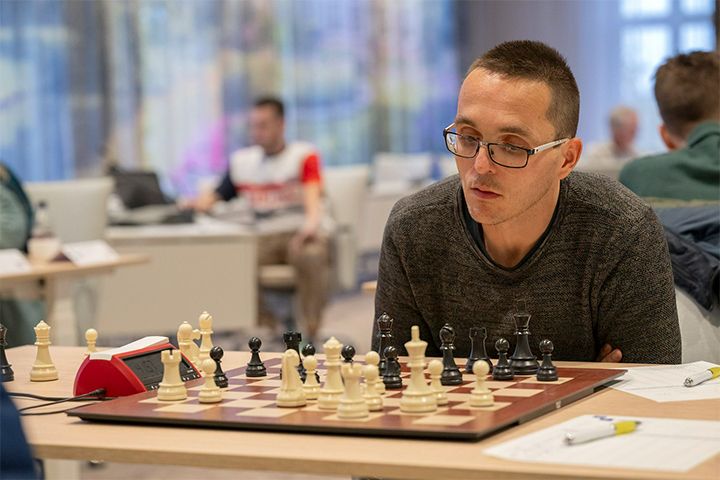Opening treasure chest of a world-class trainer
A complete opening repertoire for White in a large but manageable video series is unthinkable? Yes, you might think so – until you get to know Sipke Ernst's FritzTrainer "A practical repertoire for the positional player after 1.d4". Clearly structured, easy to understand and yet as detailed as necessary, the Dutch GM, trainer and second of Jorden van Foreest provides deep insights into his opening treasure trove. In intensive and exciting training sessions, you will learn everything you need to know to successfully use d4. About 16 (!) hours of video material, interactive exercises, repertoire training, positions to play against Fritz Online are provided and all in a handy e-book format.
I give promising mainlines for white against all black’s main replies to 1.d4 d5 that are engine-proof, easy to learn and can be played almost instantly.
The first part of the three-part video course deals with almost all conceivable black replies to 1.d4 d5 and 2.c4. To cover this in a video course of almost seven hours is an ambitious project. Due to its scope, further answers such as 1…Nf6 (part 2) and other responses (such as 1…f5, 1…c5, 1…e5) will be covered in separate video courses and will not be reviewed here.
I give promising mainlines for white against all black’s main replies to 1.d4 Nf6 that are engine-proof, easy to learn and can be played almost instantly.
For all variations, Sipke Ernst relies on his own repertoire, which he has tested himself or through his well-known protégés. The 45-year-old, who also belongs to the league of super GMs with his top Elo of 2606, mainly focuses on easy-to-learn variations. Although these are mainly positional – as the title suggests – tactical complications cannot always be avoided in order to realise advantages.

The introduction to volume 1
"To cover this large area of opening theory, I offer you easy-to-learn variations. You should not memorise them blindly, but above all understand them. They are 'high-quality lines' for the fight for the initiative," the theory expert summarises his philosophy in the introduction to this d4 compendium.
With many references to grandmaster games, he shows important and recurring types of positions and characteristics. In eight chapters, he looks at ways for White to achieve a sustainable initiative after …d5.
Overview of openings
He starts with the "Triangle Slav". Although he initially looks at the active 4.e4 in several videos, those who really want to take a more positional approach and start in a less complicated way can first look at chapter 2.5. Here we also get to know Ernst's favourite setup: Instead of plunging into complex, open battles with 4.e4, he prevents his own dark-squared bishop from making premature attacks by playing 4.e3. However, he always shows how the bishop can be developed actively via d2, b2 or a3. Ernst's universal set-up with c4, d4, Nc3 and e3 leads to surprisingly comfortable positions that are easy to play with a few general plans that are well explained by the author.
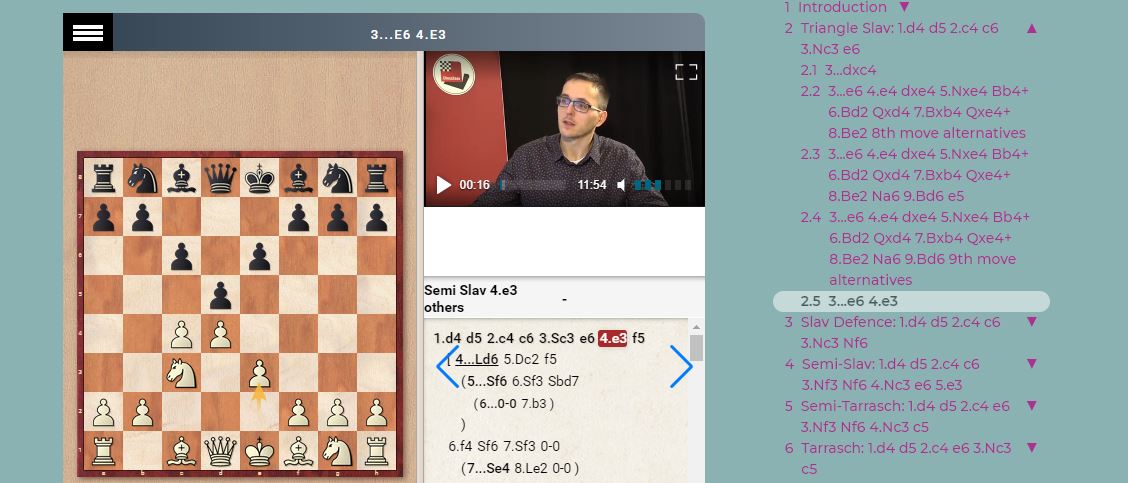
It keeps appearing: the modest-looking set-up with e3
Then follow the very substantial considerations of the Slav’ and Semi-Slav’, which can sometimes merge into each other or into other variations, but in which he generally reacts in a very positional way and also with the e3-bishop inclusion. As in the following chapters, Sipke repeatedly considers the positions from the point of view of the possible development of an isolated queen's pawn, hanging pawns or the Carlsbad minority attacks.
After the subsequent chapters on the Semi-Tarrasch – also very positional – the tacticians come into play a little more in the Tarrasch. Here Ernst also takes a detailed look at the increasingly popular Schara-Hennig Gambit. He offers two solutions: White can either defend the pawn with positional means or sacrifice one or two pawns, following the main line.
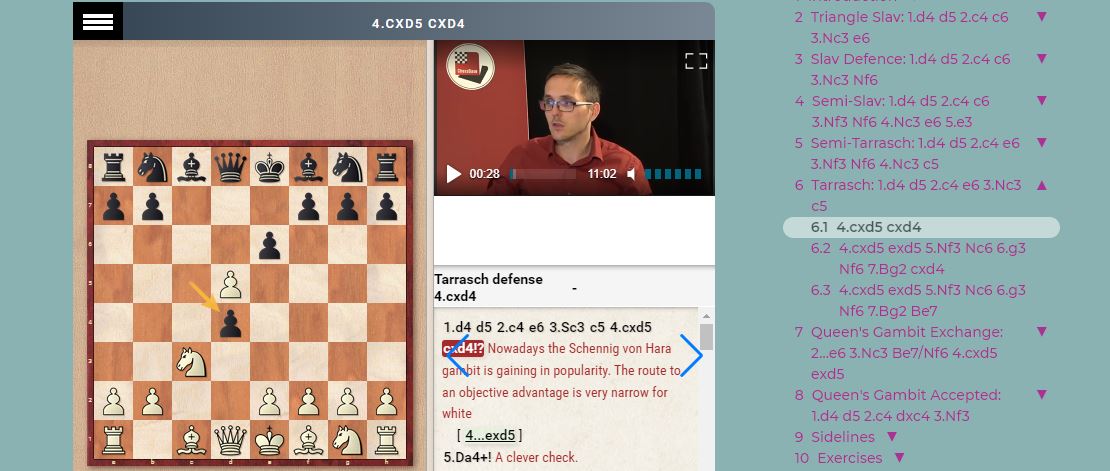
Nowadays popular with tacticians: the Schara-Hennig Gambit
Ernst's explanations of the Exchange Variation with the more frequently used bishop sortie to g5 (or f4) and the Queen's Gambit Accepted are surprisingly short and to the point, but convincing. In the latter it is particularly instructive to see how Sipke refrains from exchanging the a-pawn in some positions in order to use the pawn on a6 as a target in some variations, but exchanges it in other positions to use the a-file for his own rook.
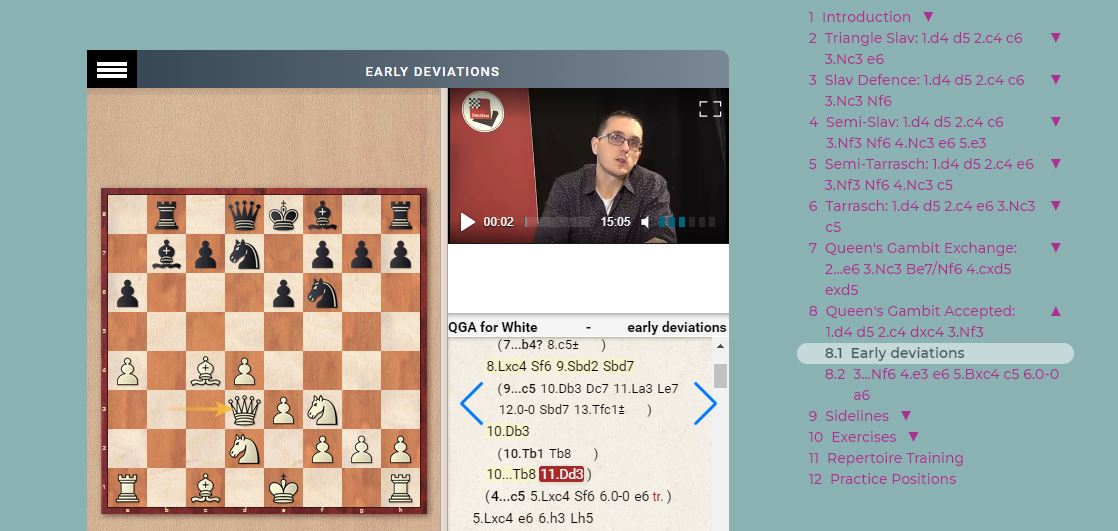
The a-pawn as an attacking target
If you want even more variety at the end, you can select "Sidelines" at the end and find, for example, almost 17 minutes of video footage of Albin's Counter Gambit. "The gambit is actually better than I expected," admits the analyst, but there are still ways for White to play actively. These are based on the principle of accepting gambits as the only way to refute them.
Summary
Sipke's variations are not quite as short as promised in the introduction. But even when they get longer, he always shows the basic plans. With short but striking sentences, he explains which pieces should be exchanged and which not, and above all why.
The experienced trainer places particular emphasis on the exchange of queens and when it makes sense to aim for an early queenless endgame, or to keep the queen on the board for a king attack. Of course, the isolated pawn on d4 should not be left out of the queen pawn game. Ernst explains what is important in these structures, when the solo pawn is strong and when it is weak.
Anyone looking at the mountains of opening books on the subject of 1.d4 and also on the subject of structures with isolated pawns would not think it possible to convey this in such a condensed and yet comprehensible way.
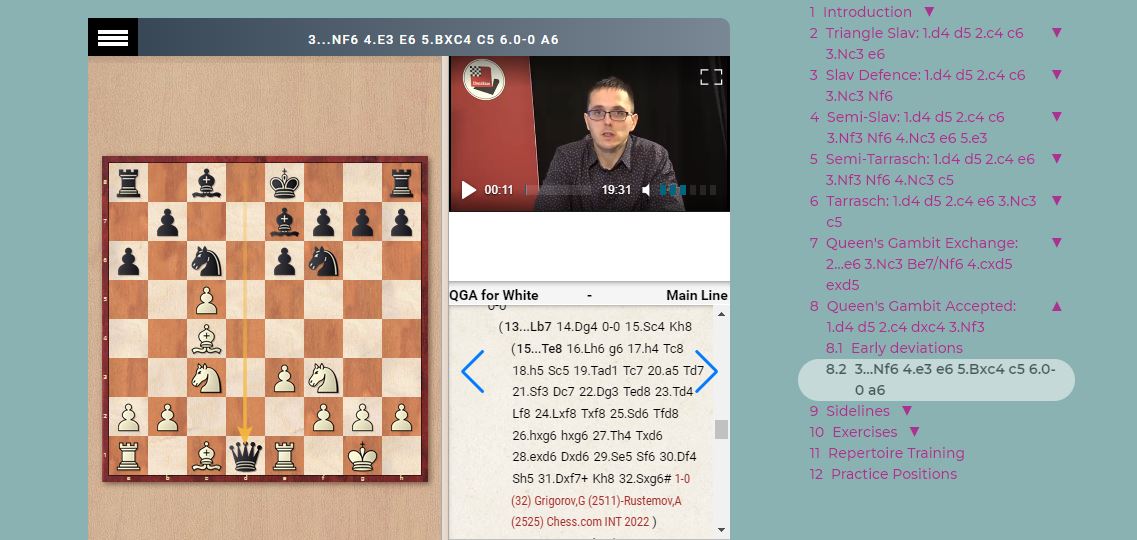
To exchange queens or not? The endgames often play very well with White.
Despite the clarity of the material and the focus on a few white position types, it is still not easy for the amateur to keep track of the finer points. Although there is no collection of the many example games mentioned, ranging from K&K to Gukesh, the new knowledge gained from this unique d4 lexicon can be quickly consolidated by working through the exercises. If you then take the time to use the repertoire training and Fritz training games, you can approach your next games with confidence in this all-round repertoire.
Hats off to Sipke Ernst for his performance and thank you for the deep insight into his treasure chest of opening tricks.
I give promising mainlines for white against all black’s main replies to 1.d4 d5 that are engine-proof, easy to learn and can be played almost instantly.
I give promising mainlines for white against all black’s main replies to 1.d4 Nf6 that are engine-proof, easy to learn and can be played almost instantly.
